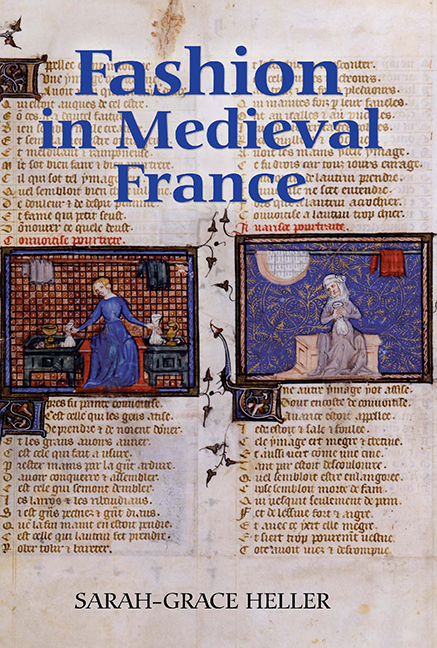Book contents
7 - The Seduction of the Well-Draped Form
Published online by Cambridge University Press: 13 April 2017
Summary
This book has argued that a fashion system was nascent in the growing urban areas of France from the later twelfth century and had become a dominant, systematic, societal force in urban areas by the later thirteenth century. It has done this by looking at expressions of desire related to elements of a fashion system. It has not, up to this point, examined closely any particular styles. This final chapter proposes a revised look at the styles of the thirteenth century, in particular the reactions to increased supply and greater variety in fabrics, the initial result in part of the desires for increasing fashionable activity.
Views of thirteenth-century appearance
Some have described the thirteenth century as a time of stasis in dress and adornment, characterized long, shapeless, unisex clothing. Christopher Breward described the styles predating the fourteenth century as “simple and functional.” François Boucher asserted that costume remained more or less constant from antiquity to the fourteenth century. His wife Madame François Boucher concluded that “the thirteenth century brought but few new elements and notable changes” in the area of dress. Ary Renan similarly states that there were no essential changes in costume from the twelfth to the thirteenth century. Such views arise partly from the relative scarcity of extant visual evidence from the thirteenth century compared with subsequent periods, as well as, at times, superficial understanding. Bumke has taken issue with the characterization of this period's style as unisex, saying that such views are based on misunderstood evidence.
Others have seen elegance, rather than a lack of style or fashion, in the long, voluminous lines of thirteenth century styles. Camille Enlart praised the dress of this period, contrasting it with the twelfth century's intricacies of pleated bliauds and embroidered and enameled accessories: “In the thirteenth century, the art of clothing like the other arts finds its beauty in simplicity. By its supreme elegance this period rivals Greek antiquity.” Jacques Ruppert offered a similar view, saying that in the thirteenth century costume was characterized by a general yearning for elegance. Joan Evans has attributed the “sculptural” simplicity of the “Gothic Period (1179–1328)” to the heavy draperies in woolen cloth, contrasting with the fluttering silks of the Romanesque period, a view critiqued by Bumke for concentrating on religious sculptural evidence to the detriment of literary records.
- Type
- Chapter
- Information
- Fashion in Medieval France , pp. 172 - 180Publisher: Boydell & BrewerPrint publication year: 2007



